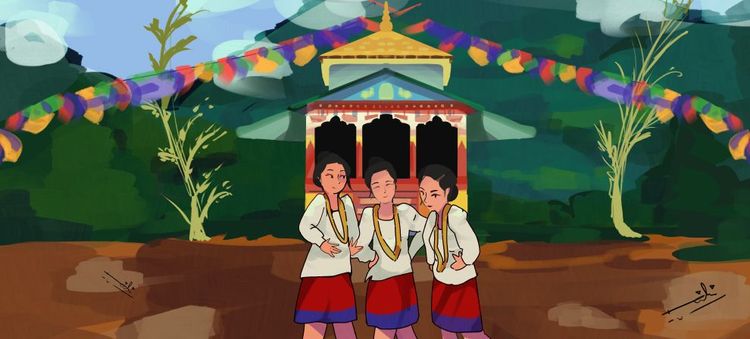For smooth Ad free experience
For smooth Ad free experience
India is known for its diversity but more importantly, how each culture is given space to thrive. One of these diverse cultures is that of the Apatanis, a tribe situated in the valleys of Ziro in Arunachal Pradesh. Each year, this tribe celebrates their own harvest festival called the Dree festival. The myth that revolves around this festival is pretty obscure, which makes it all the more interesting.

Celebrated on 4th July
Human beings were initially just hunters and foragers. Cultivation became a practice only when Anẁ̀ Donw and Abba Lwbo began cultivating fertile lands of Wypo supuñ. At least this is what the Apatanis, a tribe that inhabits the valley of Ziro in Arunachal Pradesh, believe. In their mythology and culture, Anẁ̀ Donw is believed to have been the first human to start the concept of a ‘settled life’ and Abba Lwbo, the first to start cultivating. But the story of how Dree came to be celebrated is rather long and has much more to it than just this.
With the aid of Turú dipe (spades) and Twgyó ilyo (machetes), more and more vegetation was cleared off from vast tracts of land. Then, the leavings were cleared off by burning them down till the roots. Once the land was clear, the soil was mixed to make it suitable for sowing.
With the land being cleared and prepared, Anẁ̀ Donw and Abba Lwbo lacked only one thing, the paddy seeds which were to be sown. Thus, the search for the paddy seeds began. A tedious journey brought them to Murtú Lembyañ from where they procured the pyapiñ and pyare varieties of paddy. Along with this, they also managed to obtain seeds of cucumber and corn from Murtú Yariñ. Even after stocking up this much, both felt the need of a few more things, as if something was still lacking. Thus, the search continued.
Legend says that Anẁ̀ Donw and Abba Lwbo went to such an extent that they looked into the stomachs of wild rats and boars in search of cultivable seeds.
Finally, they found the seeds empu and elãn, varieties of paddy in the stomachs of the field rats. An interesting bit of this story is that dogs were used to locate the actual source of seeds, which was believed to be the branches of the Hirẃ Tanguñ tree.
But sunny days don’t last long. When Anẁ Donw and Abba Lwbo sowed the seeds in Wpyo Supuñ, rain poured down in the form of heavy storms and disturbed the freshly grown paddy.
But there was nothing Anẁ Donw and Abba Lwbo couldn’t solve. Immediately, baskets in the form of rain guards were placed over the crops. But, this one problem led to another.
According to the myth, a demon named Pyokuñ Pembò Pyoyi Tadù attacked their fields by releasing swarms of pests, insects, and rice eating birds, from its stomach. After great efforts, the demon was eliminated.
However, this left them in a stage of deep famine due to poor harvest. To alleviate this impending famine, a series of rituals were conducted during the month of Dree. Every household was to contribute and donate towards this cause. This practice continues to this day since evil forces are still believed to be the cause of insect and pest infestations.
Dree rituals are followed through the month of June-July which is the month of Dree Pwlo for the Apatanis. This is how the Dree festival came to be observed.
In 1967, a specific date was set by the senior students of the Apatani tribe. The four rituals conducted during the Dree festival are the Tamù (to ward off insects and pests), Metẁ (to ward off epidemics and other human ailments), Medvr (to cleanse agricultural fields off unfavourable elements) and Mepiñ (to seek blessings for a good harvest and everyone’s well being).
The modern Dree has also incorporated the Danyi, for healthy cattle.
Each year, the Dree festival is celebrated with great joy and pomp. Several competitions like wsañ (high jump) and gwbw (traditional wrestling for the youth) are organised, alongside damiñda (folk dance competitions) for the women. It is celebrated meticulously every year and is a great highlight of a festival for this tribe from Arunachal Pradesh.
0
You might be interested in reading more from
